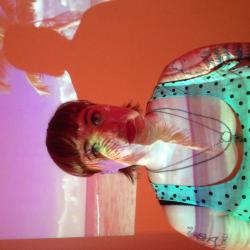Reykjavík is a creepy ass place. From the weather beaten-houses, to the ancient and decrepit graveyard, to the industrially extended shoreline of downtown, there’s all kinds of souls-without-flesh-prisons strolling around these parts. Although the end of October is when our veil between the physical and ethereal is thinnest, the constant winter darkness sure does make for some supernatural encounters.

Dig Up Her Bones: Austurvöllur Graves
Alþingi
The square in front of Parliament has recently been a real hot topic for ghoul-lovers and history conservationists alike, as an ancient burial ground was unearthed during the early stages of foundation work for a new hotel being built on the site. When first uncovered, staff in the previously standing building looked out of their windows directly onto open graves containing intact skeletons, possibly of their own ancestors. The burial site itself is now covered, but the park is still unsettling. If you feel too rattled, dip into Skúli Craft Bar on Aðalstræti—on the edges of this burial site—and they’ll ease your nerves with good beers. They also have tables perfectly sized for your Ouija Board.

Cry Little Sister: Höfði
Borgartún 105
The most notorious haunted house in Iceland, Höfði, is best known abroad for being the meeting place of Ronald Reagan and Mikhail Gorbachev, an instrumental moment leading to the end of the Cold War. That said, this house has had its own cold war for far longer. The earliest occupant, judge and poet Einar Benediktsson, claimed it was haunted by the ghost of a young woman, Sólborg Jónsdottir, who poisoned herself after Einar’s verdict on a notorious assault case. At Höfði, she would appear to him at night, pleading and crying. This claim was further substantiated by a British Ambassador who resided at Höfði in 1952, who demanded that Britain sell the house because of, what he called, ‘bumps in the night.’ Since then, it has remained uninhabited and owned by the state. But is it really haunted? Is Sólberg there? Or are these bumps merely the work of a time traveller from the future, super addled by the end of communism? Find out for yourself.

Trapped On The Shore: The Húrra Ghost
Naustin
This famous nightlife hotspot is built where Reykjavík’s former shoreline landed, and a portion of the city’s original foundation wall is still exposed in the basement of the bar. Staff in the bar have reported seeing strange shadows along the wall, and feeling random cold chills and sudden nauseating waves in the far staircase, particularly earlier in the day and when the bar is sparsely filled. Theories have suggested that it is the spirit of a young man lost at sea—either overboard or by choice—and that he is lonely and sad. Join him, if you desire, in his sorrows, with a couple shots of Fernet.

Hallowed Ground: Hólavallagarður Cemetery
Suðurgata
Of course, it is essential to mention the wonderful old cemetery on the west side of Reykjavík, just a hop from downtown. With some of the oldest graves in the city, where locals can truly go trace back their family history, this consecrated square is less ghoulish than a spiritual playground with every kind of energy flowing freely, like a high school cafeteria. There are also a lot of cats. For this extra beautiful spooky night, go late and stroll when it is snowing while listening to Hilmar Örn Hilmarsson’s original score to ‘Children of Nature.’ When you finally get home, and the nightmares come, let them.
Buy subscriptions, t-shirts and more from our shop right here!

















